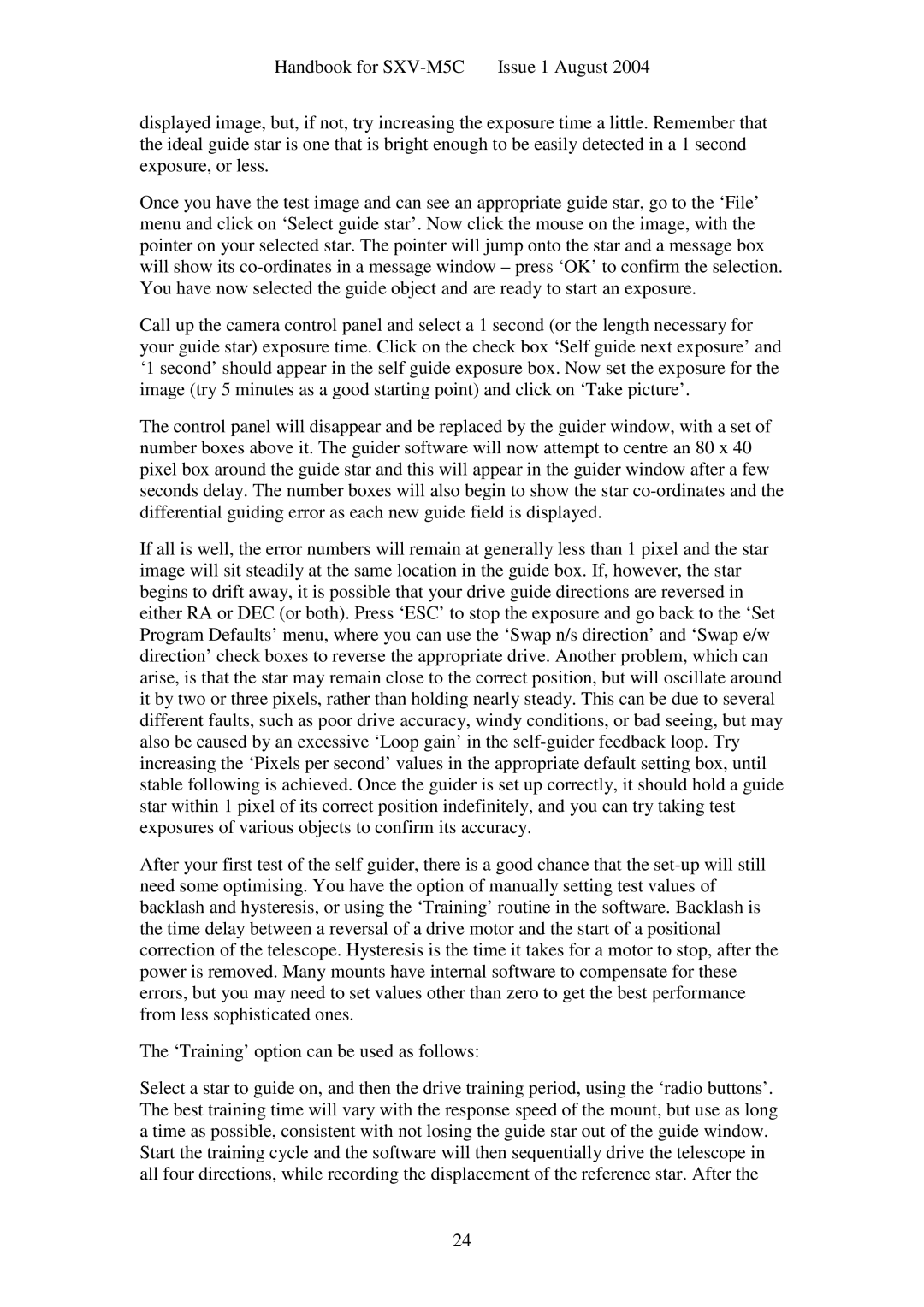Handbook for
displayed image, but, if not, try increasing the exposure time a little. Remember that the ideal guide star is one that is bright enough to be easily detected in a 1 second exposure, or less.
Once you have the test image and can see an appropriate guide star, go to the ‘File’ menu and click on ‘Select guide star’. Now click th e mouse on the image, with the pointer on your selected star. The pointer will jump onto the star and a message box will show its
Call up the camera control panel and select a 1 second (or the length necessary for your guide star) exposure time. Click on the check box ‘Self guide next exposure’ and ‘1 second’ should appear in the self guide exposure box. Now set the exposure for the image (try 5 minutes as a good starting point) and click on ‘Take picture’.
The control panel will disappear and be replaced by the guider window, with a set of number boxes above it. The guider software will now attempt to centre an 80 x 40 pixel box around the guide star and this will appear in the guider window after a few seconds delay. The number boxes will also begin to show the star
If all is well, the error numbers will remain at generally less than 1 pixel and the star image will sit steadily at the same location in the guide box. If, however, the star begins to drift away, it is possible that your drive guide directions are reversed in either RA or DEC (or both). Press ‘ESC’ to stop the exposure and go back to the ‘Set Program Defaults’ menu, where you can use the ‘Swap n/s direction’ and ‘Swap e/w direction’ check boxes to reverse the appropriate drive. Another problem, which can arise, is that the star may remain close to the correct position, but will oscillate around it by two or three pixels, rather than holding nearly steady. This can be due to several different faults, such as poor drive accuracy, windy conditions, or bad seeing, but may also be caused by an excessive ‘Loop gain’ in the s
After your first test of the self guider, there is a good chance that the
The ‘Training’ option can be used as follows:
Select a star to guide on, and then the drive training period, using the ‘radio buttons’. The best training time will vary with the response speed of the mount, but use as long a time as possible, consistent with not losing the guide star out of the guide window. Start the training cycle and the software will then sequentially drive the telescope in all four directions, while recording the displacement of the reference star. After the
24
